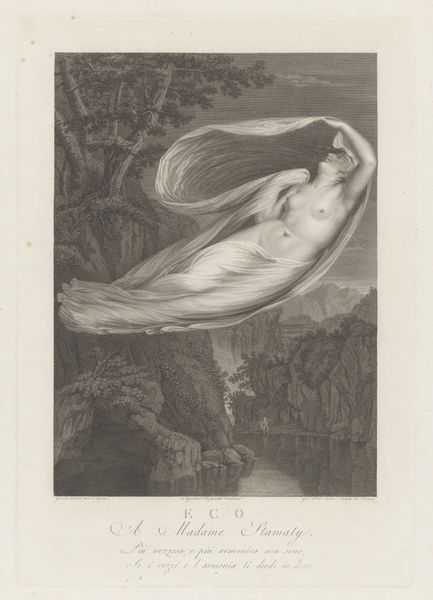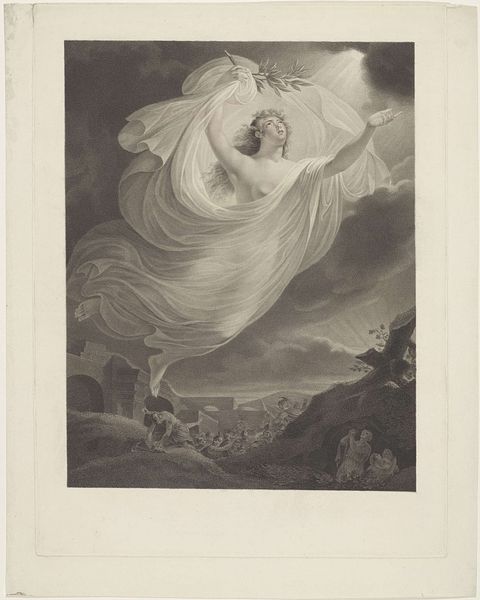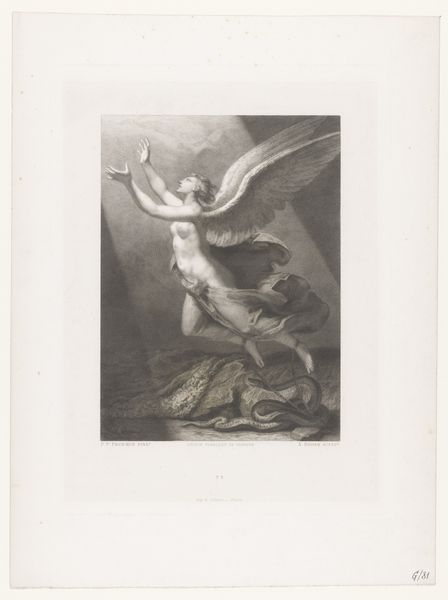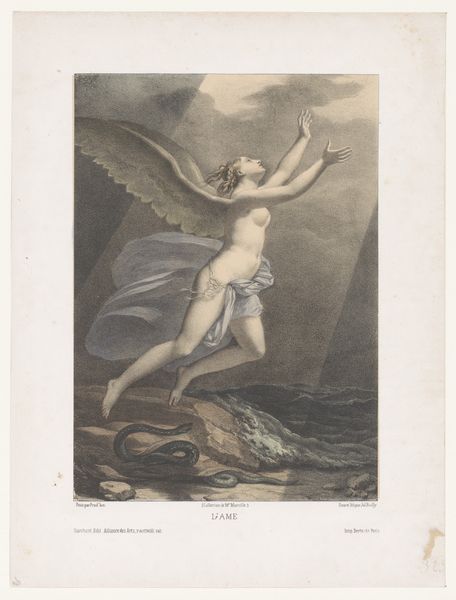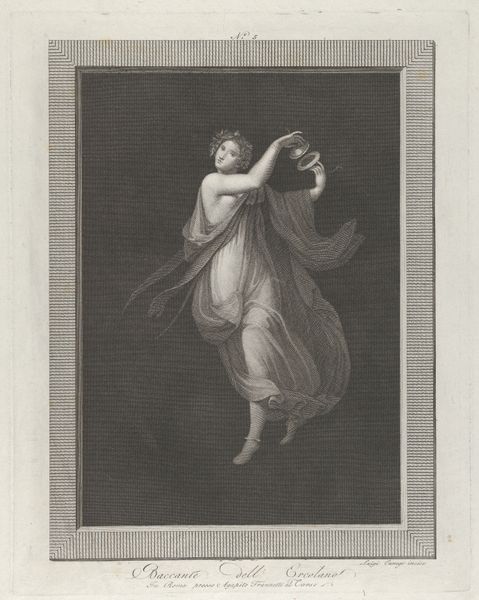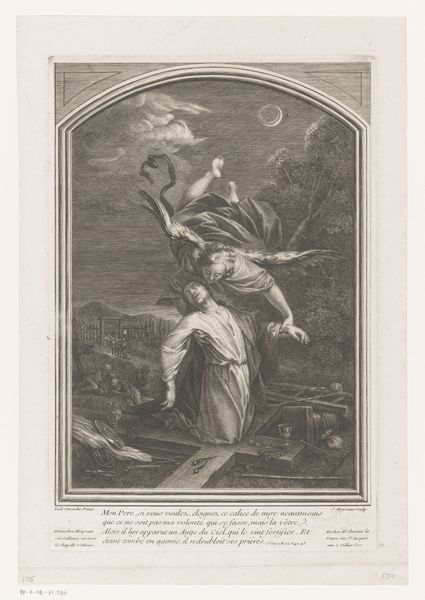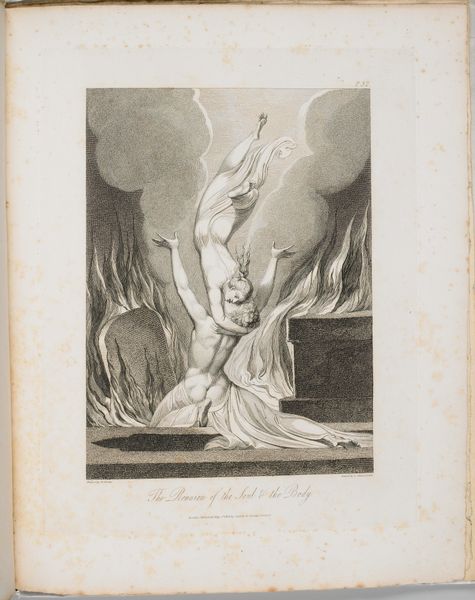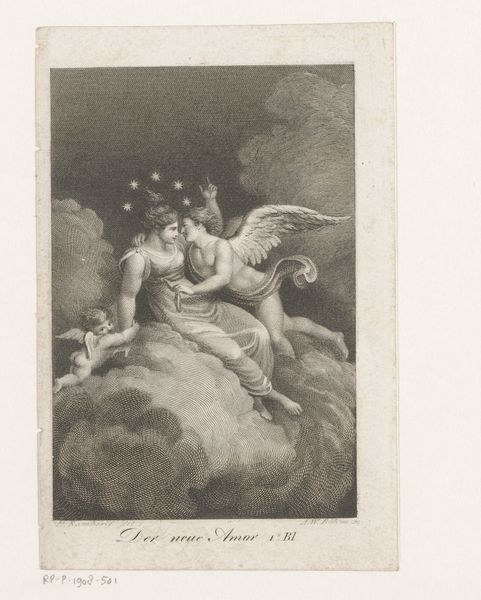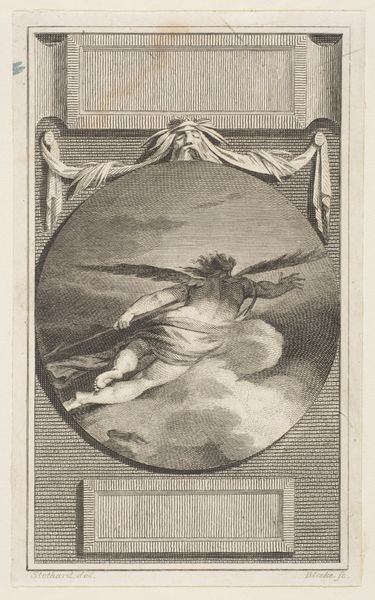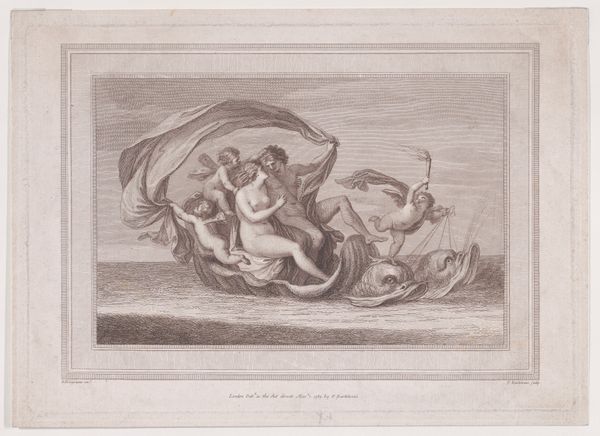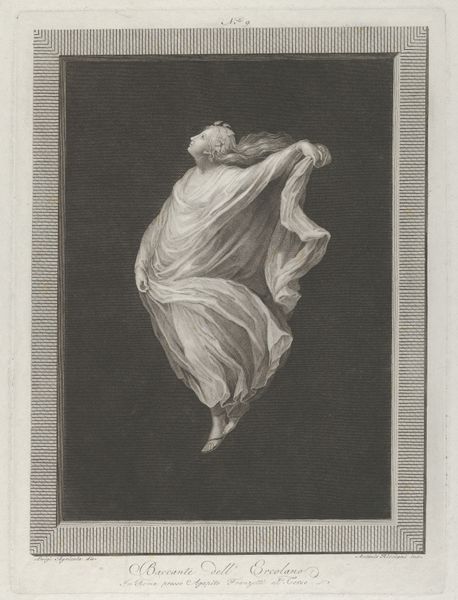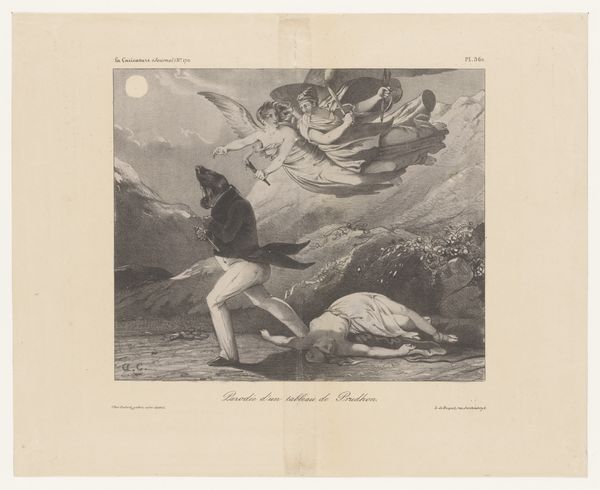
print, engraving
#
neoclacissism
#
allegory
# print
#
landscape
#
classical-realism
#
nude
#
engraving
Dimensions: height 416 mm, width 295 mm
Copyright: Rijks Museum: Open Domain
Curator: Ah, Iride... gazing at this engraving, made between 1774 and 1836 by Giovanni Folo, is like stumbling into a dream, isn’t it? So ethereal. Editor: It certainly captures a sense of lightness. The figure dominates the composition with the implied diagonal creating a feeling of movement. Though, given the landscape details, the stark rendering style almost verges on sterile, in a way. Curator: Sterile? Oh, I see it more as streamlined, classical. Look at Iris herself—all soft lines and flowing fabric. I’d say it fits perfectly with Neoclassical ideals. It’s that perfect balance that draws the eye in! Plus, landscape plays such a crucial part in framing the deity’s flight, so dynamic in an otherwise motionless piece of fine art. Editor: I can't help but fixate on the rendering of Iris, and consider its engagement with Classical Realism and its complex relationship with eroticism. I mean, it's almost academic, no? A body devoid of any, shall we say, *lived-in* qualities? Her gaze directs upward in the classical trope of higher guidance. Yet it’s a paradox – this coldness in representing such a... vivacious figure. She’s usually messenger of the gods, especially Hera, and also associated with rainbows... quite literally linking heaven and earth! Curator: Exactly! This IS allegory. She’s both nude yet powerful; heavenly, while still part of this landscape. This divine, nude figure, caught in motion – she could simply vanish if she were to put the chalice down! You feel the drama! Editor: It speaks to the broader symbolic structure. Look how light streams out from that amphora Iris presents to us, bathing half the image. And the river runs below a grotto as light touches and unifies them into an orderly set of visual and philosophical notions. This all indicates to us, how this work participates within the language of Neoclassical ideas through semiotic organization of the components within. It certainly allows one to trace such an ordered composition back to other allegories common throughout the 17th and 18th centuries. Curator: So while it may appear at first glance all soft and simple, beneath it resides incredible intricacy! A neoclassical dance in shades of grey, then. Editor: Yes. From dynamic allegory, to an emblem of its time. This certainly encapsulates the enduring power of Neoclassical symbolism through an exceptional understanding of form.
Comments
No comments
Be the first to comment and join the conversation on the ultimate creative platform.
